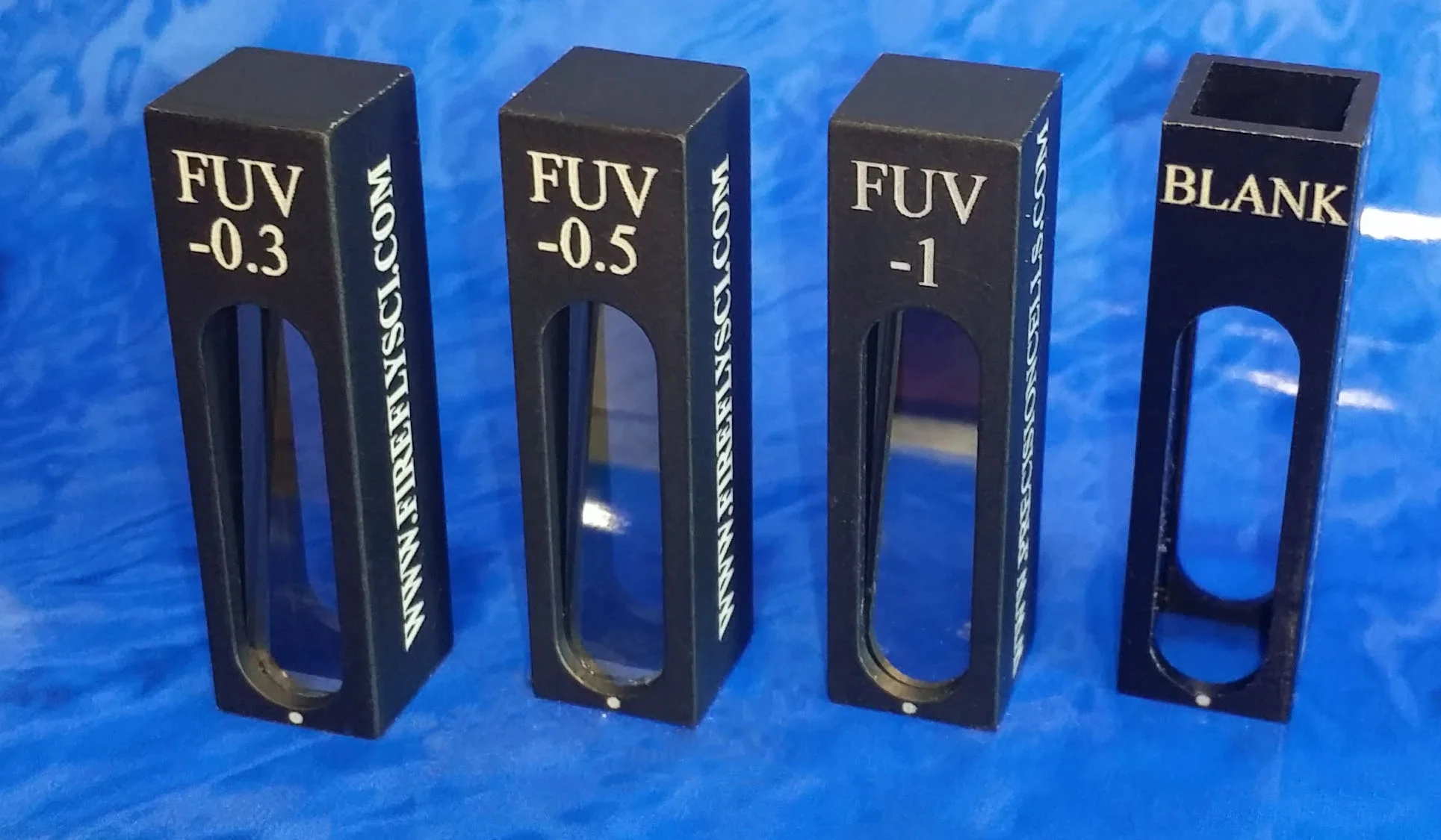Cuvette Care
/Image sourceMySafetySign.com
Handling Cuvettes
Cuvettes must always be handled with powder free gloves. Fingerprints are the number one reason for cuvettes not working and giving inaccurate readings. Cuvettes should always be held by the top section of the cell to avoid any damage to the lower portion of the cell where the light comes in. This area is usually from the bottom of the cuvette up to 25mm.
Inserting and Removing Cuvettes from Equipment
According to proper lab practice, a cuvette should be filled up before being inserted into a machine. This is to avoid spills and/or contamination in the optics chamber. Trust us you don’t want to have to clean this chamber. This area is small and can have hard to reach places. Save yourself a headache and fill up your cuvettes before putting them in a machine.
Cuvettes must be carefully placed and removed from spectrophotometers and fluorometers. When inserting the cuvette, hold the cell at the top and make sure the engraved letters of the cuvette are facing the light source of your machine. The cuvettes should be pushed straight down into the cuvette holder.
Important: Do not twist or force a cuvette into a cell holder. This could cause cracking or a breakage that could make a mess in your machine. Even though we are in the business of selling cuvettes, we don’t want you to break any.
When removing the cuvette from the holder, be sure to pull the cuvette straight up.
Cleaning and FireflySci’s Cuvette Washer
We have our own amazing cuvette washer that is made from glass. This cuvette washer is hand-blown by our Romanian glass blower who has decades of experience.
To use the FireflySci Cuvette Washer you can follow the easy steps below:
Empty excess sample from cuvette.
Turn the cuvette upside down and insert it on the round black gasket with the water jet in the middle.
Turn on your vacuum pump and this will lock the cuvette onto the cuvette washer.
Pour cleaning solution of your choice into the large clear cup (the one without the cuvette) and let the cuvette washer work its magic.
When finished you can dry the cuvette on a cuvette rack.
Using an Ultrasonic Cleaner to Clean Cuvettes
Ultrasonic cleaners can do an amazing job of cleaning cuvettes. Actually during assembly we use ultrasonic cleaners for cleaning plates and other cuvettes accessories. However we do not recommend that people use these types of cleaners. These types of cleaners can cause high vibrations that can cause cuvettes to crack or fall apart. Our warranty does not cover cuvettes that are damage in ultrasonic cleaners.
Simple Cleaning Solutions
Any solvents that are used to clean cuvettes should be highly pure. We recommend using distilled water or spectrophotometric grade solvents. These solvents must be free of any suspended materials and contain no lanolin or oils.
Solutions for cleaning cuvettes vary from experiment to experiment. What determines the cleaning solution is the type of sample that was tested. For routine cleaning we recommend using diluted Hydrocholoric acid rinse once the cuvette is finished being used. After using the Hydrochloric acid, the cell(s) must be rinsed with distilled water.
For sticky samples that are hard to remove from the cells, we recommend to soak the cells in diluted sulfuric acid. An accessory that is great for removing leftover dirt and stains is our Cell Squeegee which you can use to scrape the cell walls and remove any leftover residue.
Storing Cuvettes
We highly recommend keeping all cells that are not in use in their case. This helps keep the cells clean and out of any danger, such as a lab student accidentally knocking it onto the floor. We love when lab students do this, but the lab managers
Cells should be completely dry before placing them into their protective case.
![firefly_logo_FINAL [Black].jpg](https://images.squarespace-cdn.com/content/v1/5411d5c0e4b02e1c8b27565a/1434491508803-XB4OF7YDY46Z72L5U5AP/firefly_logo_FINAL+%5BBlack%5D.jpg)










